Material Reliability Test of PLA Polymer Degradation
Home » Material Reliability Test of PLA Polymer Degradation
This App Note shows the approach of EAG Laboratories to test the material reliability of PLA Polymer Degradation
Reliability Test Approach
Test plan definition (define CtQ & pass-fail criteria) => experimental phase => data analysis => prediction model

Material Reliability Test Example
Degradation of polylactic acid (PLA) polymer – predictive life-time modelling for different use scenarios
Test Plan Definition — Accelerated Testing
PLA based polymers degrade when exposed to moisture, this chemical
degradation process is accelerated by temperature
Test Plan
Damp-heat storage tests at 3 T%RH combinations
Response Parameters
Mechanical degradation (tensile stress measurement) & Chemical degradation (FTIR measurement)
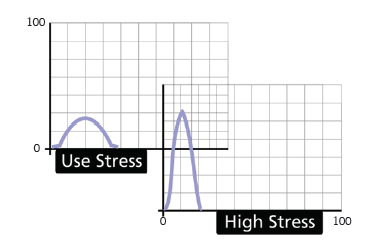
Experimental Phase
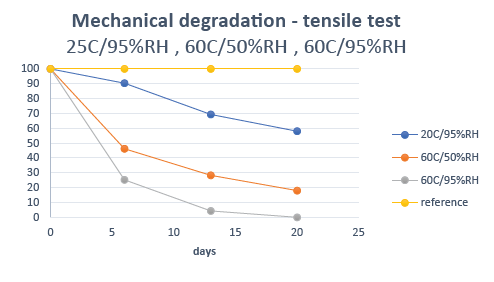
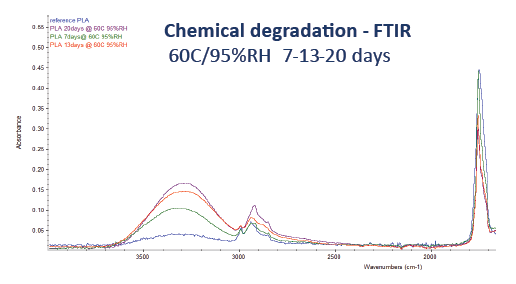
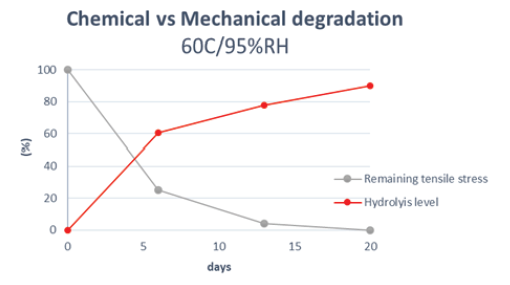
Data Analysis
The mechanical degradation data, the chemical degradation data or both can be analyzed using Reliability software
Damp-heat test 25°C/95%RH – 60°C/50%RH – 60°C/95%RH
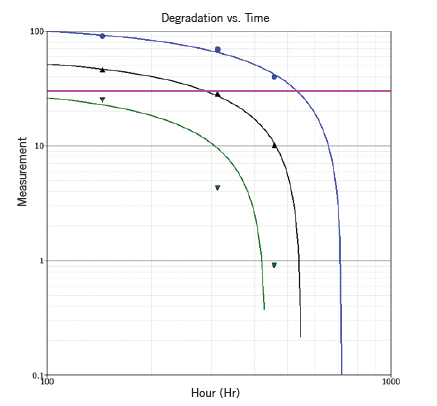
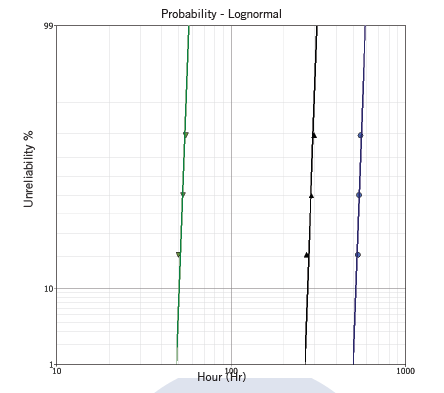
1A: Find degradation model that fits the experimental data set
1B: Definition fail level (for example 30% remaining strength or 30% chemical degradation
2A: Choose a reliability failure mechanism acceleration model (Arrhenius, Eyring, Temp-humidity…)
2B: Choose life distribution that fits the fail data (Weibull, lognormal, exponential)
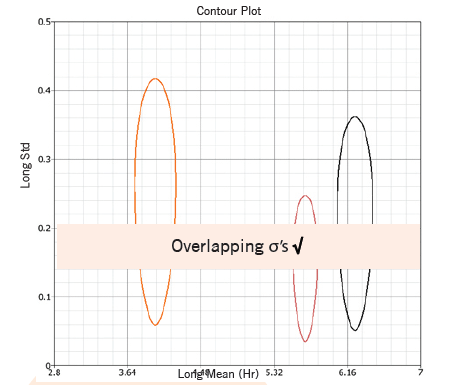
3: Check validity of experimental data
Prediction Model
4: Generation of a prediction model to predict reliability parameters for different use scenarios
Specification PLA reliability: ≥90% at 4500 hour
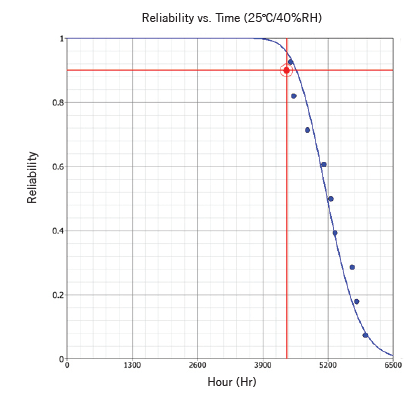
5: Calculate reliability parameters for different use scenarios
The prediction model predicts the material lifetime under the chosen operating conditions.
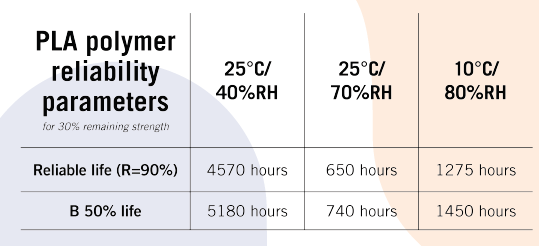
Would you like to learn more about Reliability Test of PLA Polymer Degradation?
Contact us today for your material reliability test of PLA polymer degradation needs. Please complete the form below to have an EAG expert contact you.